

Energy and Winneshiek
By Robert Wolf
Decorah, IA, USA
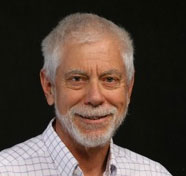
Robert Wolf
Decorah, Iowa is home to a novel concept in energy conservation and the promotion of renewable energy. This city of 8,000 in northeast Iowa is the county seat of Winneshiek County and has attracted a sizeable number of people who are looking at alternatives to our highly centralized economy. The Winneshiek Energy District, incorporated as a nonprofit in 2009, is promoting one aspect of decentralization.
It declares its purpose to be: "To reduce the ecological and climate impacts of energy use within Winneshiek County, Iowa. To promote economic health and sustainable development in Winneshiek County through reducing energy costs and promoting local energy sources and related economic activity. To work towards a more sustainable society in Winneshiek County and its communities."
The architect of the Winneshiek Energy District and its executive director is Andy Johnson, who has spent his working life in conservation. "I started in the Peace Corps in Central America for almost three years, doing conservation work. When I returned, I worked for the Natural Resource and Conservation Service (NRCS) of the USDA in Georgia. I worked as a conservationist at NRCS for seven or eight years. When I left the NRCS I did some consulting on conservation and energy development. That's when I was getting more into energy. In 2007 we moved back to the family farm outside Decorah. We're raising Christmas trees and grass fed beef. But the greater part of my time is spent working with the Energy District."
The Winneshiek Energy District, Andy Johnson is quick to point out, does not simply do energy auditing: it does energy planning. That begins with an audit, which is what some power companies offer, but extends to recommendations for conservation.
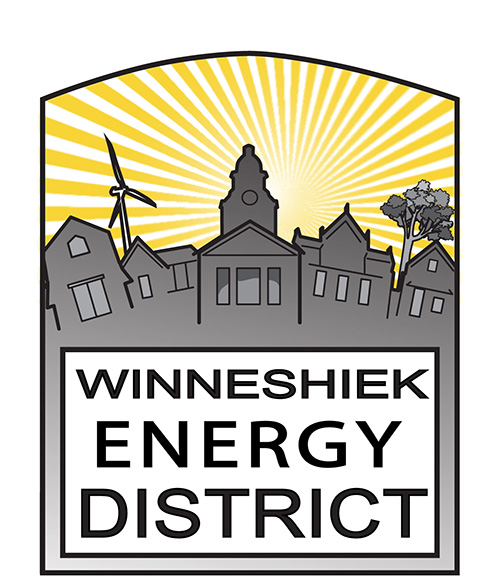
"When I moved to Winneshiek County in 2007, I was one of many trying to figure out how we could scale up what individuals, businesses, and other organizations were doing. I wondered how can we do this countywide?"
He began meeting with others in Decorah—Jim Martin-Schramm, Craig Mosher, and Larry Grimstad—who were also concerned with the issue. They met frequently over coffee to discuss what might be done to lower local energy usage and increase the use of renewables.
"In my time with USDA," Johnson said, "I worked with half a dozen Soil and Conservation Districts." The Soil Conservation Districts are something that Andy's father, Paul Johnson, is quite familiar with. Paul had been asked by President Bill Clinton in 1993 to head the U.S. Soil Conservation Service (now the Natural Resource Conservation Service) at the USDA and stayed through 1997. "I had been Chief of the Soil and Conservation Service and was familiar with the soil conservation idea," Johnson said in a phone interview. "What always inspired me was the democracy of it. The Federal government said, 'If you're willing to organize your community, we will give you the funding to set up a conservation district.'"
Impressed with the district concept, Andy wanted to implement its equivalent for energy conservation and development in Winneshiek County. "Then, when the [Federal] stimulus funds came along in 2009, we [in the discussion group] were getting to a point in our local conversation where I asked, 'Are we going to do something?' I said, 'If you all are interested in the Energy District, I'll write the grant if you're all in for the Board.' Once we got the grant we hired staff."
That Board was an interesting mix. Martin-Schramm is professor of religion at Luther College; Grimstad was CEO of a Decorah family-owned bank; and Mosher is associate professor of Social Work at Luther. Schramm, Johnson said, spearheaded much of Luther's clean energy projects, such as the wind turbine it installed in 2011. "A lot of that would not have happened without Jim." In 2009, the group incorporated the Energy District as a 501(c)(3) nonprofit.
Andy wrote a matching grant to the Federal government for $500,000. To secure the grant, he had to demonstrate that "the Energy District had a one-to-one match." The Board decided to build a cost share efficiency program, from which the bulk of the match would come from participants—the businesses and residences. "We did charge for the energy planning," Johnson said. "What the homeowners and businesses did"—installing energy saving lighting, for example—"paid for part of the match. We ended up more than matching the grant."
Green Iowa AmeriCorps volunteers were trained and paid a stipend to conduct the audits and make recommendations for energy conservation. The Energy District's program kept expanding. Paul Johnson said, "They [the Energy District] have just recently gotten a grant from the USDA to work specifically with farmers in the four-county region here. They're now working with them on energy audits. They had over a hundred farmers come to Calmar [Iowa] for a presentation."
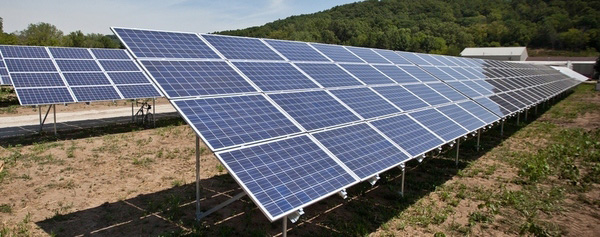
Luther College Solar Field
"Decorah," Johnson added, "leads the state [Iowa] in solar installation.'
Craig Mosher, a Board member of the Winneshiek Energy District, said, "Decorah has more installed photovoltaics than any other community in the state." [Photovoltaics is a method for transforming solar energy into direct current electricity.] "I don't know how it stacks up nationally, although on a per capita basis, it may be high. This is largely due to the Winneshiek Energy District, which has promoted and facilitated families and businesses (and now farmers) making their buildings more energy efficient and adding solar photovoltaics."
Mosher is one of a growing number of persons, not only in Decorah, but also in the Driftless region, who are promoting the idea of self-reliant and sustainable communities. "Resilient, sustainable communities that are relatively self-sufficient in energy, food, employment, education, and so on, are one important strategy for dealing with changes that global climate change is bringing upon us. To the extent that we can cooperate with others in the community to produce the food, energy, and products of various kinds that we need—we will be able to detach somewhat from the global, perpetual-growth, consumer economy that is devastating the planet. I believe that there are many people who are underemployed in today's economy who would welcome the opportunity to live in a caring community where people make as much of what they need locally as they can and take care of each other."
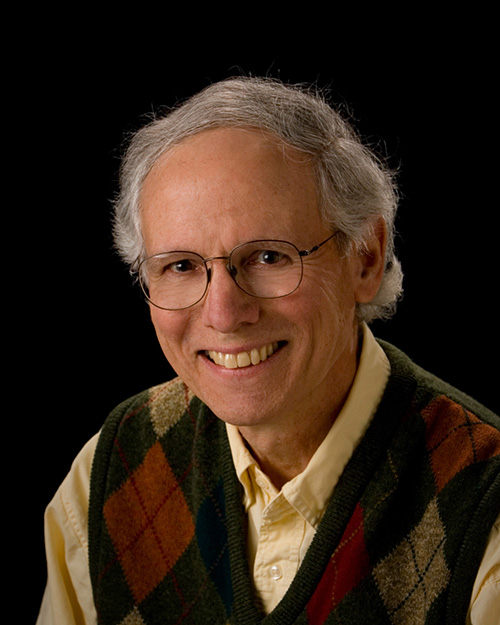
Craig Mosher - Board Member
Winneshiek Energy District
Communities whose members cooperate and care for each other are important qualities for Mosher, who is associate professor of Social Work at Decorah's Luther College. "I began thinking about sustainability in the early 1970s when I was leading a 'free school' in an intentional community of 200 people in San Francisco. We often went camping on a sacred mountain, and I began to be aware of how interconnected and alive the whole world seemed to be. Reading people like Thomas Berry, Rachel Carson, Wendell Berry, the Club of Rome, and studying the I Ching raised my awareness about the importance of the environment and the cosmos."
Retired banker Larry Grimstad, another Board member of the Winneshiek Energy District, came to consider alternative energy sources in the mid-1990s. "Although science has been relatively uninteresting to me," Grimstad wrote to me, "I enjoy observing trends and began reading about global warming in the mid-1990s and remember thinking this trend does not look good, and why haven't I paid attention before?"
He began visiting university libraries "looking for information on electricity, natural gas and gasoline carbon emissions. I checked Luther's library, the downtown Minneapolis library and the Edina [Minnesota] library. I had not discovered Google yet."
He was looking for a carbon emissions calculator to understand what size carbon footprint he was leaving. His search "came up empty. I was frustrated and began constructing a carbon calculator. I was doing my own calculations from a spreadsheet. In the early 2000s I finally found a household and family carbon calculator. Information was becoming much easier to find from electronic sources."
How does a carbon calculator work? "All you need to know is how many lbs. of carbon is emitted from burning one gallon of gas, from burning one therm of natural gas, from using one kilowatt of electricity, from one gallon of waste in the garbage can, from one passenger mile on an airplane, etc. Those numbers are easily available from Goggle. Then all you need to know is how far you drive in one year plus your vehicles mileage rating, how many therms you are using from your utility records, how many kilowatt hours you use in one year from your utility billings, how far your travel."
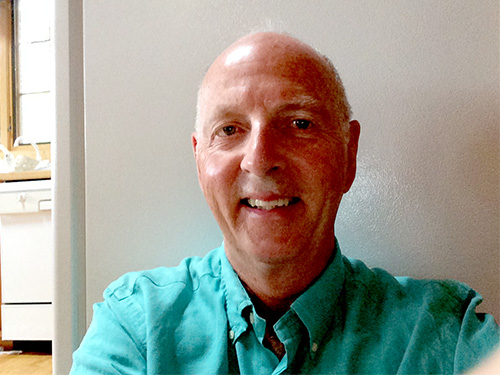
Larry Grimstad - Board Member
Winneshiek Energy District
Grimstad and his wife, Diane, bought a farm "in 1998 and begin thinking about sustainable farming and constructing a home that would allow us to live sustainably. We designed the house ourselves. We fund contractors who would help meet our goals of reduce, recycle and reuse."
With his own company, Decorah Solar Field, LLC, Grimstad built an array of 1,250 solar panels at Luther College for a cost of $1.2 million. When Luther acquires another solar array, the two fields of panels will, according to the Luther College website, "power all electrical appliances as well as the geothermal heating and cooling system at Baker Village," a cluster of student housing. The agreement between Grimstad and the college provides for the college to lease his array for seven years, after which time the college intends to buy the array. With this and other projects, Grimstad has been a leading promoter of renewables in Iowa.
The investor in renewable energy projects, like Grimstad, has the incentive of a 30 percent Federal tax credit, plus an allowable deduction for depreciation. Iowa makes the investment more attractive, offering its own tax credit.
With all of Decorah's success with energy conservation and installation of solar photovoltaics, the Winneshiek Energy District's Board is optimistic about the future of renewables. Both Mosher and Grimstad point to Samsø, an island in Denmark, that offers a model for energy self-sufficiency, something they hope Winneshiek County can achieve. Mosher visited Samsø last year with Luther students. The island, Mosher said, "will soon be totally net zero in energy. Three thousand people in seven villages and many farms have set up ten offshore and seven onshore wind turbines, two biomass and solar hot water heating plants, and are working on a solution for the diesel powered ferry. They export electricity to the mainland. Local people are developing local solutions, led by a farmer, Søren Hermansen, who saw the need several years ago."
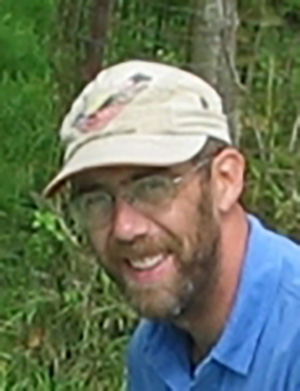
Andy Johnson
Executive Director
Winneshiek Energy District
Not only does Decorah rank high in per capita solar installation, but, said Paul Johnson, "We also now rank number one in the nation in Energy Star Commercial establishments. Decorah now has more Energy Star establishments, per capita, the highest in nation."
Andy Johnson hopes that someday energy districts will spring up across the country. "We're getting queries from other communities around the state and nation," he said, "and we hope we can start a movement similar to the soil conservation program."
The need for public support continues. "We have to get local people involved," Paul Johnson said. "Get them to take on the responsibility of renewables and conservation." Wanting clean energy is one thing, taking the next step—conserving and reducing use in daily living—is another.
Links:
Robert Wolf at Stay Thirsty Publishing
Robert Wolf
Free River Press
American Mosaic Radio with Robert Wolf






